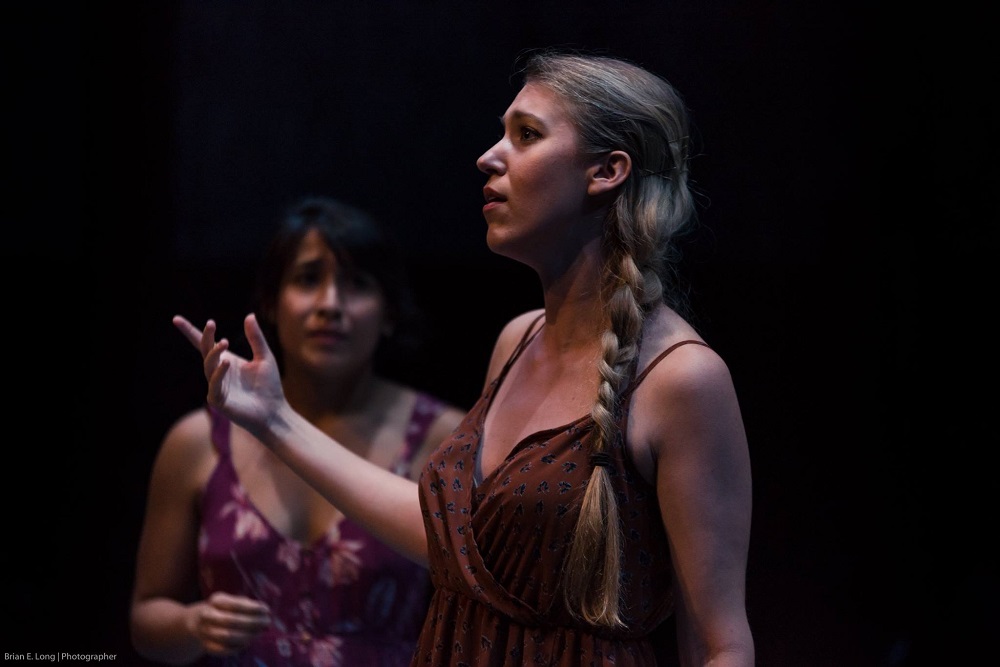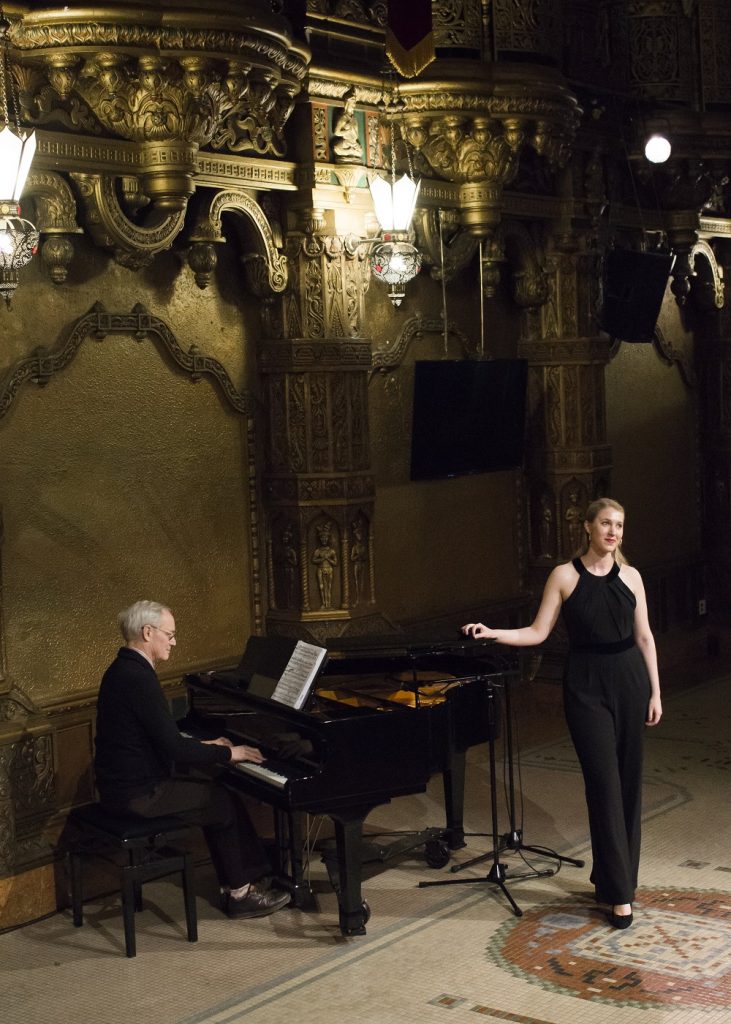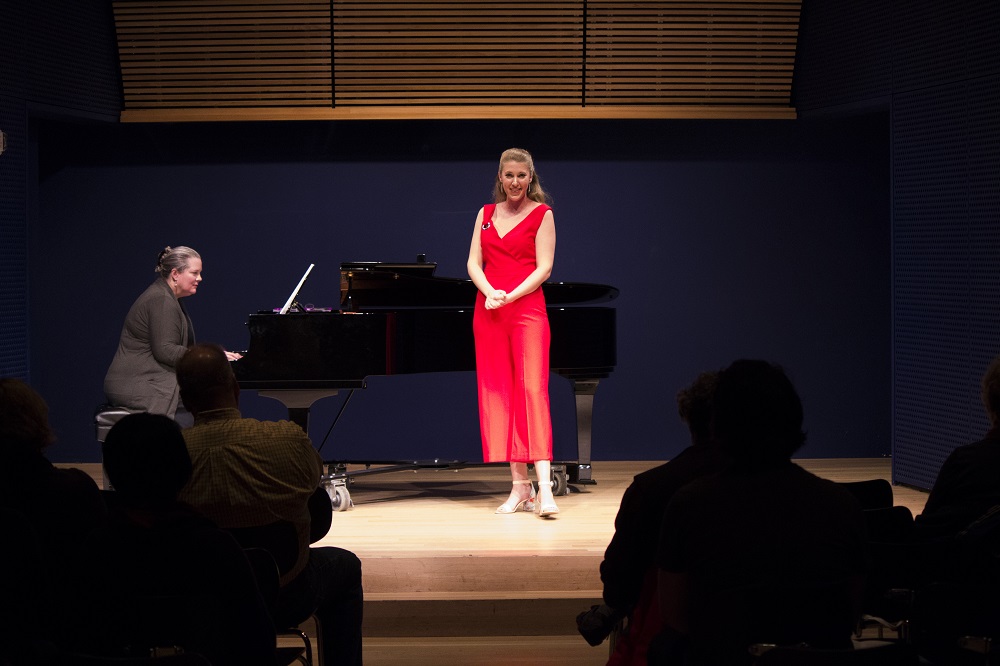Discovering the Truth Behind the Marking

Rebecca Richardson
I so am thrilled to be sharing this guest post by Rebecca Richardson, about her insights and process around interpreting dynamic markings -in a way that is actually dynamic! Thank you Rebecca!
– Kate
Discovering the Truth Behind the Marking
by Rebecca Richardson
Every classical singer has heard, at one point or another, something along the lines of the following:
“The composer gives you all the information you need to perform the piece in the score.”
Yes, this statement is absolutely correct! Logistically, every piece of information you need to accurately sing an aria or scene, from notes and rhythm to dramatic intent, can most likely can be found somewhere within the score. Studying the subtleties of harmonic language and text placement like breadcrumbs leading to the composer’s overall objective is necessary for creating an authentic interpretation of the music.
However, I’ve recently discovered that the markings that seem the most explicit in their meaning are sometimes the most difficult to interpret, particularly those markings indicating dynamics or overall feeling. Markings such as animato (“lively”) or lustig (“cheerful”) don’t actually provide the musician with any indication for how to perform the piece. Rather, when composers or editors dictate a marking in a score, they are asking for the result of an action, what should be produced and expressed at that moment in the music. It is our job as the creator, interpreter, and performer to then take these markings and translate the adverb or adjective into an action verb.
In Violetta’s final aria from La Traviata (“Addio, del passato”), Verdi writes dolente (“painful or sorrowful”) just as the aria proper begins. While it’s very clear what Verdi is asking for at that moment in the music, it’s not clear how to go about achieving a “sorrowful” expression. In “What Good Would the Moon Be?” from Street Scene, Weill writes tranquillo (“quiet,” “calm”) at the start of the aria. Tranquillo is an especially tricky direction as it denotes both a dynamic intention as well as an emotional one.
In Kate’s Foundations Course for Professional Singers and subsequent practicum, we’ve been working our way through Cathy Madden’s Integrative Alexander Technique Practice for Performing Artists: Onstage Synergy. In her book, Cathy addresses this very circumstance for musicians and proposes the idea of translating these adverbs and adjectives found in scores into psychophysically active verbs. Cathy emphasizes the fact that emotions cannot precede action, and these actions should be ones that can be physically expressed if desired (e.g. “to expel/ drive away” is a stronger choice than “to forget”). Just as in life, emotions occur on the stage in response to an action or series of actions; after all, isn’t our goal as performers to create works with honesty?

“Just as in life, emotions occur on the stage in response to an action or series of actions; after all, isn’t our goal as performers to create works with honesty?”
Therefore, what psychophysical verb can Violetta execute to achieve feeling dolente? How can Rose Maurrant truly communicate tranquillo to the audience? Verb choices are personal and adaptable, and there are no wrong answers! The advantage of translating these adverb and adjectives into psychophysically active verbs is that the musician doesn’t have to sacrifice his/her ability to perform well in order to perform this music with integrity. No one is aware of your verb choices aside from you. You have the freedom to choose actions that will effectively communicate with both your colleagues on stage as well as your audience members, whether those chosen verbs are directly related to the emotional result or not.
It’s easy to see why composers use adverbs and adjectives in their scores—they are ensuring that we, the interpreters, understand exactly what the composer wants to convey to the audience. I recently spent some time contemplating why composers don’t just use verbs for their markings. Wouldn’t that make the execution of the composer’s music so much clearer? I soon found, however, that having verbs chosen for you takes away some of the creativity in performing. What sorrowful or quiet means to one musician doesn’t necessarily mean the same to the next, so why shouldn’t each musician’s chosen verbs reflect his/her own authentic self?
Dear reader, these thoughts are just the humble observations of a perpetual student and sometimes performer of music—take them as you wish. If nothing else, I hope I’ve sparked some curiosity about your own idea of truth telling on the stage. Kate, thank you so much for letting my share my thoughts on your wonderful blog!
